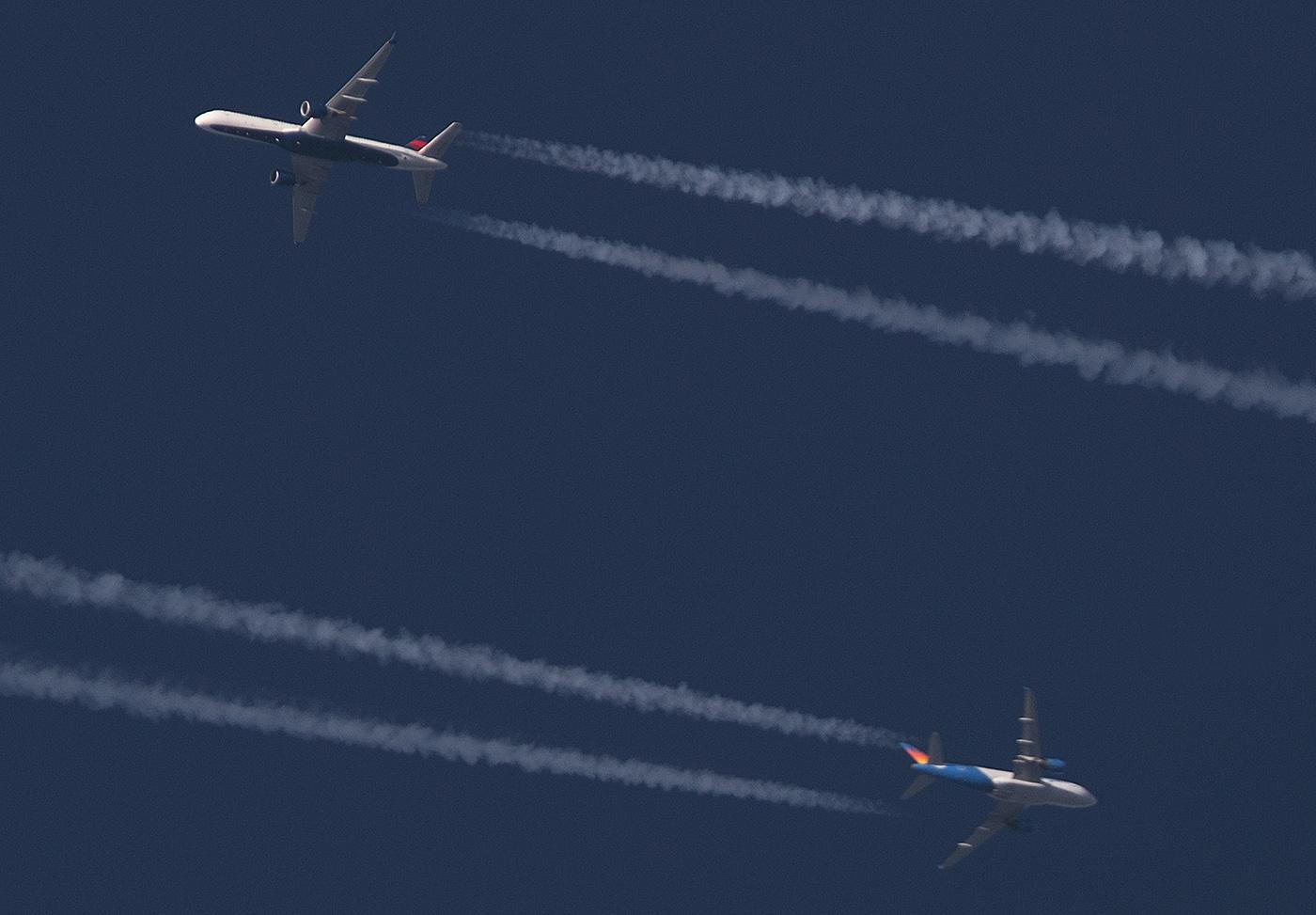コロナ危機が航空業界に与える次の試練:高速鉄道

コロナ危機が民間航空業界に長期的な悪影響を及ぼすことに加え、中国やヨーロッパで急速に成長する高速鉄道システムも脅威になる可能性があると、大手投資銀行のレポートが指摘している。
4月2日に発表されたレポート「鉄道か飛行機か?新型コロナウィルスと環境変化がもたらす旅行者のジレンマ(原題:By train or by plane? The traveler’s dilemma after Covid-19 and amid climate change concerns)」で、中国とヨーロッパの利用者による飛行機から鉄道へのシフトがいつ起きるか、UBS社のアナリストと研究者が論じた。彼らはこれがビジネス客・レジャー客双方にもたらす効果、二酸化炭素排出量の削減、業界に及ぼす影響などに着目した。
UBS社の研究チームは「二酸化炭素排出量削減のための投資の一部は交通・旅行業界に回ることもあるだろう。しかし先進国は『2050年までに二酸化炭素排出量実質ゼロ』という野望を捨てるとは考えにくく、かといって消費者も時間がかかる在来線を選ぶとも思えない。このことから、ヨーロッパと中国では航空機から高速鉄道へのシフトが起きると考えている」と語った。
この分析によると、地域内の航空交通量の伸び率は低下し、航空業界・航空会社・空港・インフラ・石油業界に影響を及ぼす可能性がある。レポートには「多大な影響を受ける業界は、二酸化炭素排出量の削減につながる製品やインフラ開発を加速するような、新しいビジネスモデルを探すことになるだろう」とも書かれている。
恩恵を受けるのは、鉄道車体・信号機器・制御機器・ブレーキ等のメーカーだ。
UBS Evidence Labが中国・フランス・ドイツ・イタリア・スペインの1000人を対象に実施した調査によると、レジャー客は5~6時間の鉄道旅行なら許容できると答えた。一方、ヨーロッパのビジネス客は2~3時間というコンセンサスに対し、4時間まで許容できるという。ちなみにUBS社によると、中国では高速鉄道が航空機よりも自動車から多くの旅客を奪ったが、この傾向は変わる可能性がある。サービス品質と運航頻度が長時間の鉄道旅行を支えるカギであり、競合が増えることでこれらは共に向上していくからだ。
UBSの研究者によると、2018~2028年における航空旅行市場の旅客キロ数の年平均成長率は、ヨーロッパ域内は0.1%(2019年にボーイング・エアバス社が出した予測は4.1%)、アメリカ国内線は1.8%(同3.2%)、中国国内線は6.4%(同8.1%)だ。これらを総合すると、世界の航空旅行市場の年間成長率は4.6%となり、コロナ危機以前に多くの航空機メーカーやアナリストが10~20年間の見通しとして予測していた5.1%を下回ることになると研究チームは述べている。
高速鉄道は長い間、航空旅客市場の成長に対する潜在的な脅威だった。ボーイング社のチーフセールスマンRandy Tinseth 氏は当社の取材に対し、航空業界の成長を予測するカギとなる指標は高速鉄道であると答えている。以前は航空機と比較して優れた利便性と同等の所要時間が脅威とされてきたが、これからはサステナビリティがこの均衡を崩す可能性がある。
UBS社の研究チームは、コロナ危機による景気後退に加えて、外出制限により先進国・途上国とも二酸化炭素排出量が激減し、テレワークやビデオ会議といった新たな生活スタイルが根付き、世界人口の多くが大気汚染から解放されたことも思い起こされることになるだろう、と述べた。
以上は、Michael BrunoがAviation Dailyいた記事です。 Aviation Dailyは、民間航空に焦点を当てた経営幹部に重要な洞察をお伝えいたします。航空会社と空港の戦略、主要航空会社のデータスナップショット、運賃データ、および国際的なカバレッジを毎日お届けいたします。Aviation Dailyをもっと知りたい場合、こちらをクリックして下さい。
To the list of potential long-term challenges to commercial aviation from the COVID-19 crisis, add the likelihood of faster growth in high-speed train services for travelers in China and Europe, according to a new report by a major investment bank.
In the April 2 report titled, “By train or by plane? The traveler’s dilemma after Covid-19 and amid climate change concerns,” UBS analysts and researchers discuss how soon a shift by Chinese and European consumers away from air to rail could happen. They looked at what the impact might be for both business and leisure passengers, the potential savings in carbon emissions and how industries could be affected.
“Some investments for projects to lower carbon emissions may be diverted to supporting the transport and travel industries, but we do not believe the developed world will abandon its ambition of ‘net zero’ carbon emissions by 2050, nor that consumers will no longer want to optimize the use of their time by taking longer train journeys,” the UBS team said. “We, therefore, expect an acceleration in the shift from planes to high-speed rail (HSR) in both Europe and China.”
Based on their analysis, the UBS team said intra-regional air traffic growth could be lower and therefore may weigh on traffic volumes and valuations in the aerospace, airline, airport, infrastructure and oil sectors. “The most significantly affected sectors will likely aim to find new business models, and to develop products and infrastructure that can accelerate the reduction of carbon emissions,” according to the report.
Benefactors would be manufacturers of train rolling stock, signaling, controls and brakes.
According to data from a UBS Evidence Lab survey of 1,000 people in China, France, Germany, Italy and Spain, leisure travelers will tolerate 5-6 hours on a train, with EU business travelers up to four hours compared with the consensus of 2-3 hours. Meanwhile, in China, HSR has taken more travelers off the roads than away from airlines, according to UBS, but that could change. Service and frequency are key drivers of demand for longer train journeys, and both can be improved when competition among operators is introduced.
UBS researchers estimate that the compound annual growth rate in the air traffic market—by revenue passenger kilometers (RPK)—over the 2018-28 period could drop to 0.1% for intra-Europe (compared with the 4.1% assumed by 2019 forecasts from Airbus and Boeing), 1.8% for intra-U.S. (versus 3.2%) and 6.4% for intra-China (against 8.1%). Overall, this would cut the global air traffic growth forecast to about 4.6% annually, versus the 5.1% estimated before the COVID-19 outbreak that most aircraft OEMs and traffic analysts have in their 10- or 20-year outlooks, the UBS team said.
HSR has long been a background threat to global airliner growth. Asked about what indicators he watched closest for his industry’s growth potential, chief Boeing salesman Randy Tinseth told Aviation Week that HSR was a key factor. Previously the threat stemmed from comparable travel times and ease of use. Increasingly, however, sustainability factors could tip the balance between air travel and HSR.
The UBS team said that as well as the economic downturn triggered by COVID-19, “movement restrictions may also be remembered for having abruptly reduced emissions in developed and emerging countries for weeks, [and] triggered new habits (remote working, the use of social video-calling apps) and given a majority of the population the experience of much lower levels of pollution.”